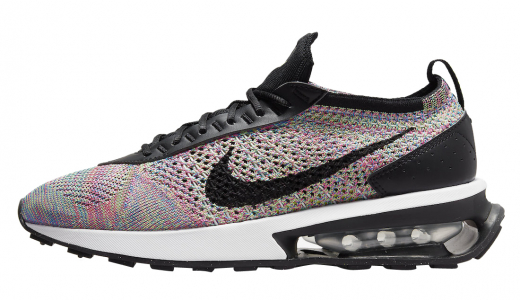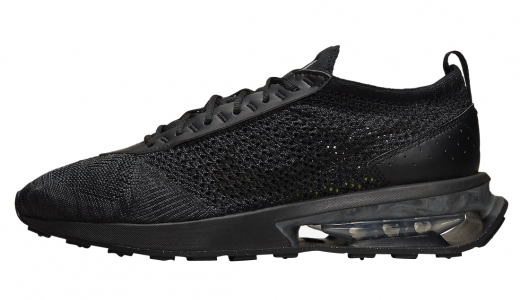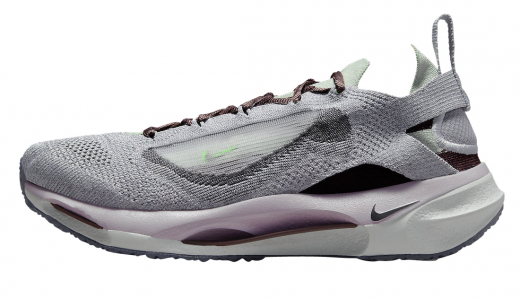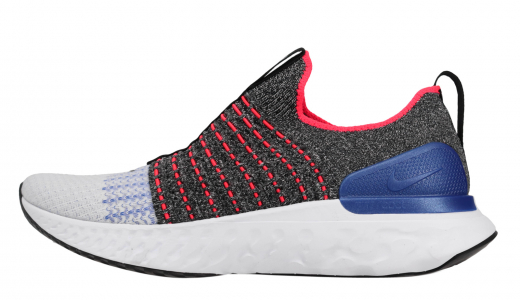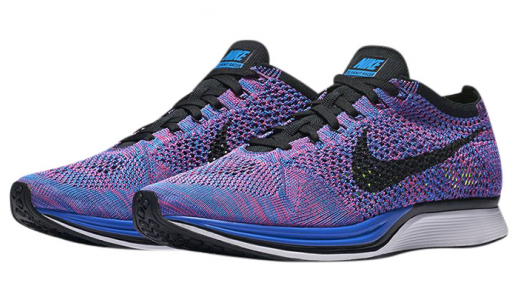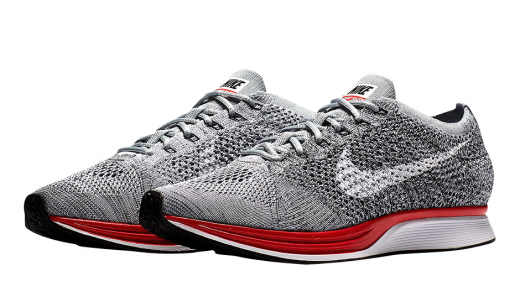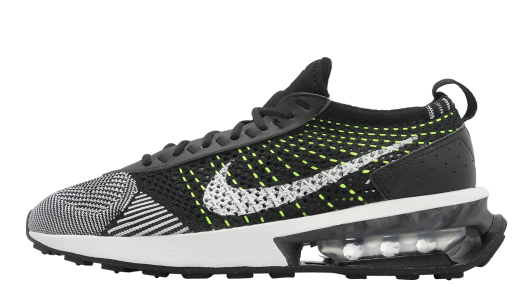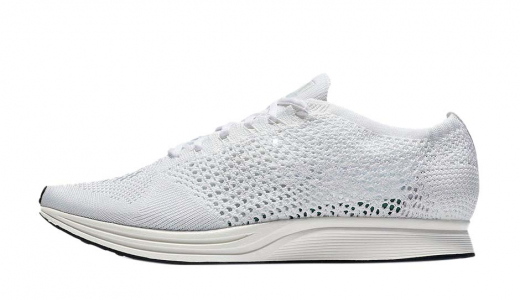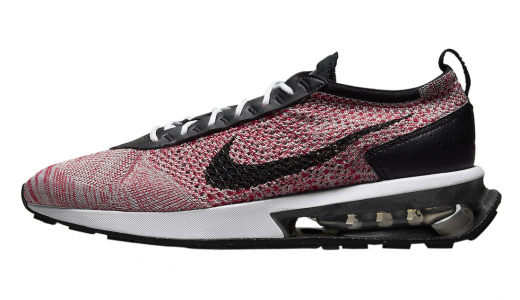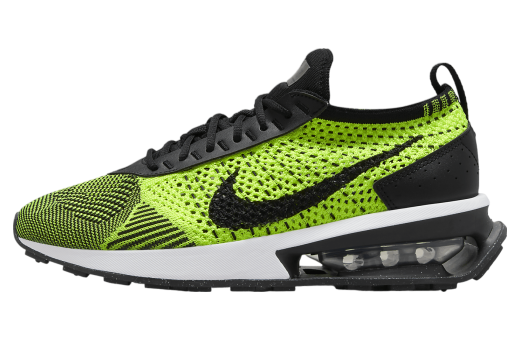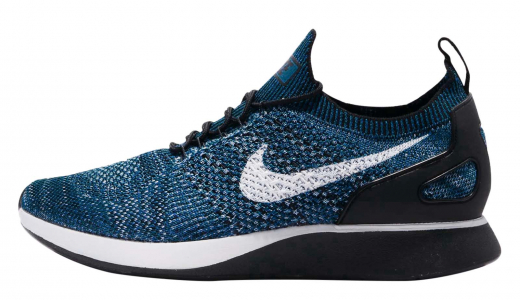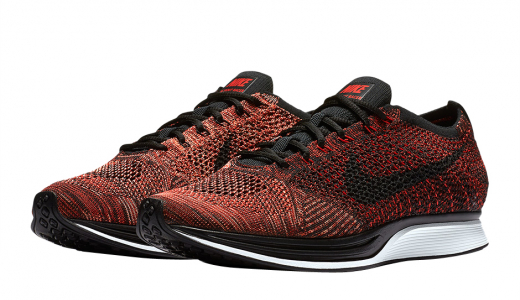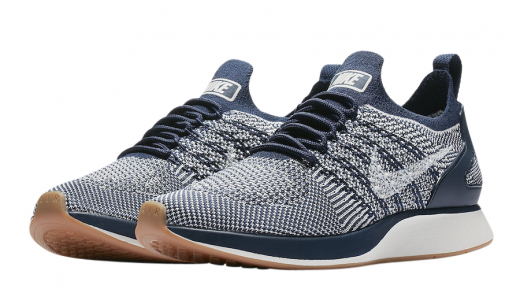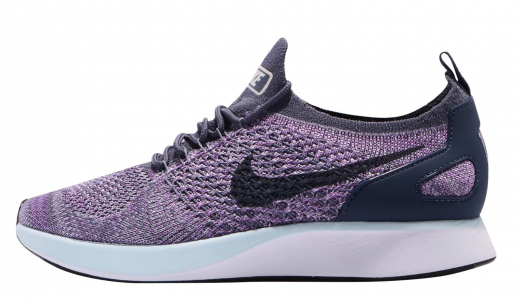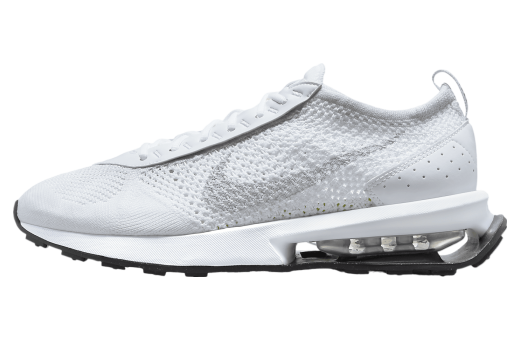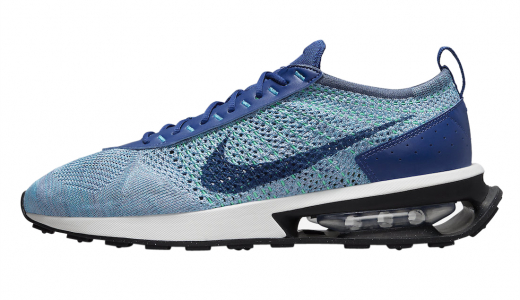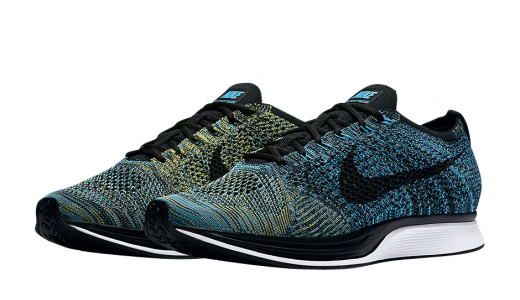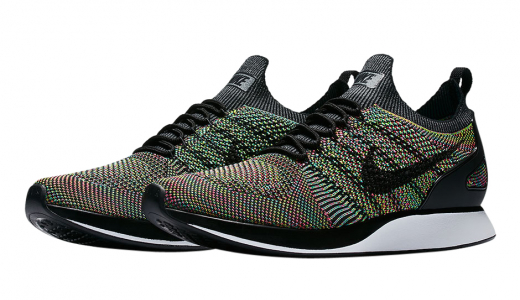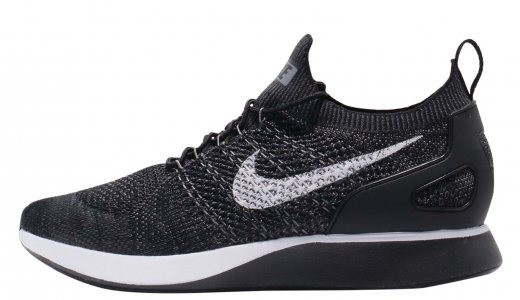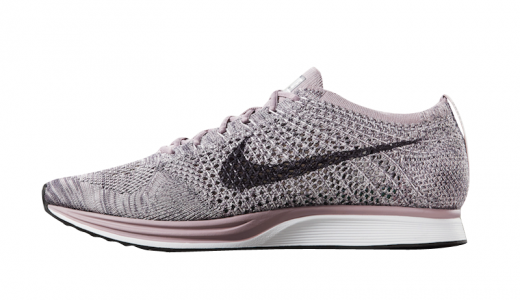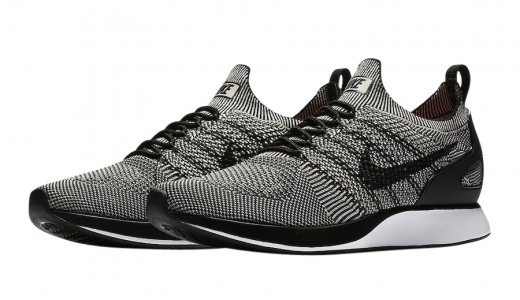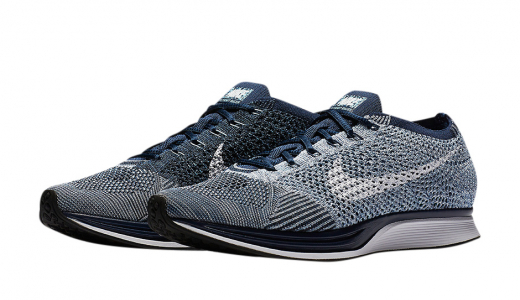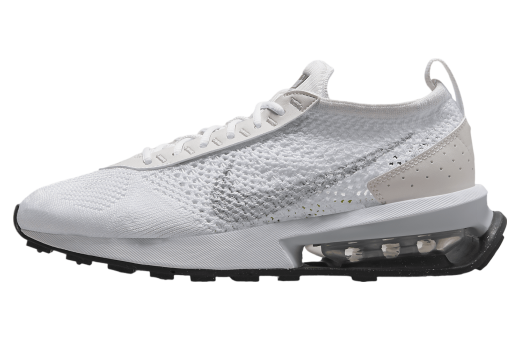Nike Flyknit Racer
The Nike Flyknit Racer is a revolutionary running shoe that marked a significant evolution in the design and manufacturing of athletic footwear. Launched in 2012, the Flyknit Racer quickly grabbed attention with its distinctively woven upper, created entirely from strong, lightweight yarns. This innovative construction technique, known as Flyknit technology, offers a second-skin fit to runners, providing exceptional breathability, flexibility, and support without unnecessary bulk. The Flyknit Racer was designed with performance in mind, featuring a feather-light design that tips the scales at just 160 grams, making it one of the lightest racing shoes at the time of its release.
Beyond its technical prowess, the Nike Flyknit Racer also boasts a striking aesthetic that has helped it gain a dedicated following beyond just the running community. The shoe's seamless, minimalistic appearance has made it a favorite among fashion-conscious sneaker enthusiasts and athletes alike. The Flyknit Racer's impact extended beyond its initial release, influencing the design of subsequent Nike models and setting new standards for sustainability in footwear manufacturing, thanks to its significantly reduced waste during production. Its blend of performance, innovation, and style ensures that the Nike Flyknit Racer remains an iconic silhouette in the world of sportswear.
History of Nike Flyknit Racer
The History of the Nike Flyknit Racer
The Nike Flyknit Racer, introduced in 2012, is an iconic running shoe that has not only revolutionized the world of athletics but also left an indelible mark on sneaker culture and the footwear industry at large. Its inception, development, and the subsequent impact on both performance sportswear and street fashion weave a complex tale of innovation, engineering excellence, and cultural resonance.
Origins of Flyknit Technology
To understand the significance of the Flyknit Racer, one must first look at the evolution of Nike's vision and technological prowess. Nike, founded in 1964 by Bill Bowerman and Phil Knight, has consistently pushed the boundaries of footwear design. By the late 2000s, the company was searching for new ways to minimize weight while maximizing the performance and comfort of running shoes.
Nike’s innovation lab faced this challenge head-on, and the idea of a shoe made from a single knit upper was conceived. The result was Flyknit technology. Unlike traditional running shoes that were comprised of multiple stitched-together pieces, Flyknit utilized advanced yarns and intricate knitting patterns to construct the upper part of the shoe in one seamless piece. This innovative approach not only reduced weight significantly but also provided a snug, sock-like fit, enhancing the runner's experience.
Launching the Flyknit Racer
After years of research and development, the Nike Flyknit Racer made its debut in February 2012 in New York City. The product was unveiled just in time for the London 2012 Summer Olympics, symbolizing the innovative spirit of the games. Elite athletes, including long-distance runners, were among the first to wear the Flyknit Racer. To bolster the launch, Nike emphasized the shoe's unprecedented light weight – about 160 grams per shoe – making it one of the lightest running shoes ever made.
The Flyknit Racer was immediately embraced by the athletic community. The finely tuned knit structure allowed for precise engineering in support and flexibility where runners needed it most. Additionally, the Flyknit construction significantly reduced waste during manufacturing, aligning with increasing environmental consciousness in both the industry and among consumers.
Technical Features
Several elements contribute to the superior performance of the Flyknit Racer:
1. Flyknit Upper:
The hallmark of the Flyknit Racer is its one-piece upper, constructed using high-strength fibers. This upper contoured to the natural shape of the foot, provided targeted areas of support and breathability, and ensured a lightweight structure.2. Flywire Technology:
Integrating Flywire cables into the Flyknit provided additional support and structure. These lightweight cables could be adjusted through the laces, offering a customized fit for additional stability during runs.3. Midsole and Outsole:
The integrated midsole made of two-layer Phylon foam delivered responsive cushioning, while the waffle-patterned outsole provided traction and durability. The combination of these features ensured energy return, essential for long-distance runners pushing their limits.4. Aesthetics and Colorways:
The Flyknit Racer's distinct aesthetic, derived from its knit construction, allowed for dynamic color variations and creative expressions. This made it appealing not just to runners but also to sneaker enthusiasts and fashion-forward consumers.Impact on Sports Performance
The Flyknit Racer quickly garnered acclaim in professional running circles. Distance runners praised its combination of lightness, support, and the natural feel it provided during runs. Athletes wearing the Flyknit Racer achieved impressive results, solidifying the shoe's reputation as a high-performance choice.
During the 2012 London Olympics, several athletes sported the Flyknit Racer, further validating its effectiveness on the world stage. The performance benefits of a nearly weightless shoe with customized support translated into improved running efficiency and overall performance.
From Track to Street: Sneaker Culture Adoption
Beyond the track, the Nike Flyknit Racer made substantial waves in fashion and streetwear. Sneaker culture has long been a melting pot of sports, music, and urban aesthetics, and the Flyknit Racer found itself at the nexus of these influences. The shoe's sleek design and adaptability to vibrant colorways made it a favorite among sneaker aficionados.
Collaborations with designers and limited-edition releases further increased the Flyknit Racer's desirability. Its minimalistic design allowed it to pair well with various outfits, from athletic wear to casual streetwear, cementing its status as a versatile and stylish choice.
Environmental and Manufacturing Impact
One of the significant breakthroughs of the Flyknit technology was its potential for sustainability. Traditional shoe manufacturing processes involve cutting multiple material pieces, resulting in substantial waste. The Flyknit process, however, used yarn precisely in the necessary quantities, significantly reducing material waste.
Nike capitalized on this aspect by promoting the Flyknit Racer not only as a high-performance shoe but also as an eco-conscious alternative. This message resonated with environmentally-aware consumers and set a precedent for future advancements in sustainable footwear manufacturing.
Evolution of the Flyknit Technology
The success of the Flyknit Racer paved the way for expanding Flyknit technology to other models and categories within Nike's portfolio. Following the Flyknit Racer, Nike introduced the Flyknit Trainer, which shared similar upper construction but with variations to suit different athletic needs.
Flyknit technology made its way into basketball shoes, lifestyle sneakers, and even football boots. The adaptability of Flyknit construction proved invaluable across various sports, offering tailored solutions ranging from enhanced flexibility for ball control to sturdier builds for lateral movements.
Legacy and Influence
The Flyknit Racer's legacy is rooted not just in its technological advancements but also in its cultural impact and influence on the future of shoe design. Several years post-launch, retrospectives have celebrated the Flyknit Racer as a turning point for Nike, reinforcing its position as an industry leader in innovation and design.
1. Performance Revolution:
The Flyknit Racer initiated a paradigm shift in performance running shoes. Competing brands took note and began developing their own versions of knit-based footwear, trying to match or surpass the Flyknit's lightweight, performance-oriented design.2. Design and Aesthetic Revolution:
From a design standpoint, the Flyknit Racer's minimalistic look set trends within the sneaker industry. Its clean silhouette and customizable colorways influenced numerous other products and lines, emphasizing simplicity and versatility in sneaker design.3. Sustainable Manufacturing Practices:
The Flyknit Racer underscored the importance of sustainability in manufacturing. Flyknit's reduced wasteful processes have inspired further advancements and initiatives focused on eco-friendly production within the footwear industry.Conclusion
From its groundbreaking introduction in 2012 to its lasting influence on sports, fashion, and manufacturing, the Nike Flyknit Racer stands as a testament to innovation and forward-thinking design. It encapsulates Nike's commitment to pushing the boundaries of what athletic footwear can achieve, not just in performance, but also in aesthetics and ecological responsibility.
In the grand tapestry of sneaker history, the Flyknit Racer occupies a distinct and prestigious space, symbolizing a moment when a single product line managed to redefine expectations and set new benchmarks for an entire industry. Its legacy continues in the myriad forms Flyknit technology has since taken, influencing countless athletes, designers, and everyday wearers, proving that true innovation is timeless.
